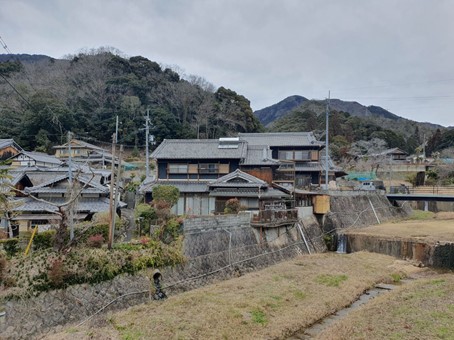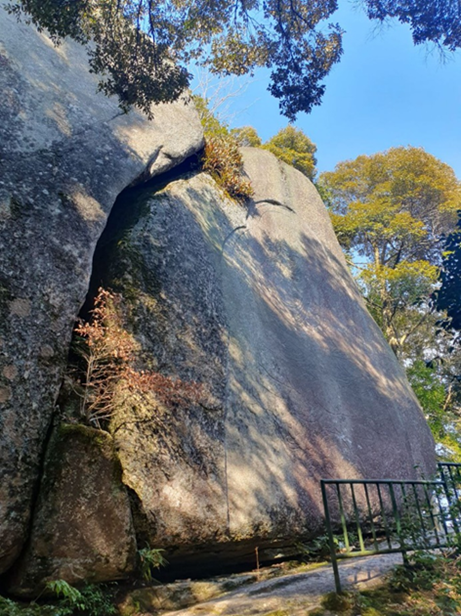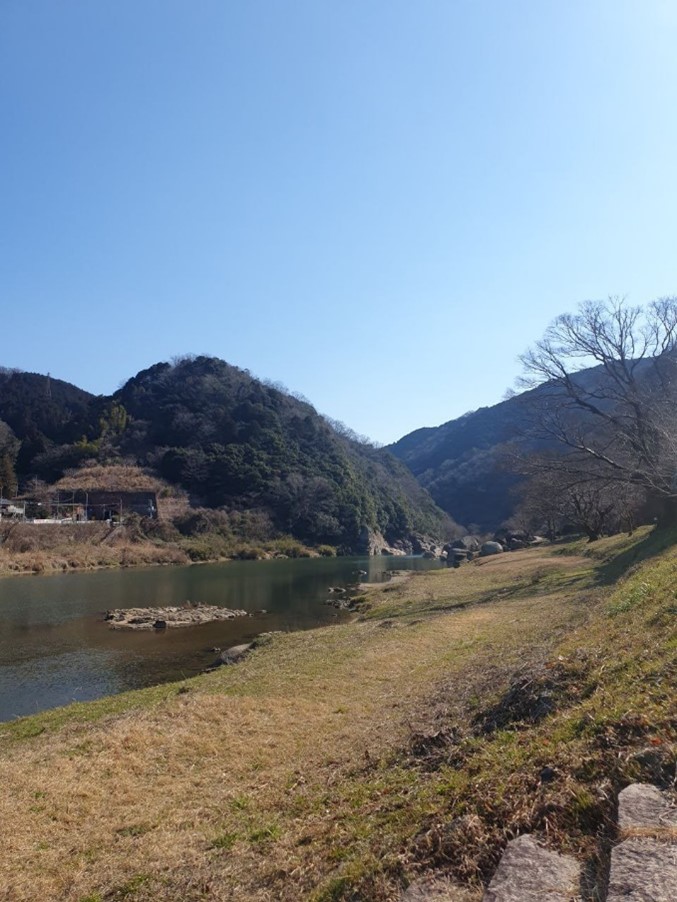by Anne-Sophie L. König
The cold was slowly creeping through my jeans on a cold February day in 2023 as I tried to keep my balance sitting on a bridge railing, while writing down field notes. I had just come from an hour-long interview with the chairman of the village assembly of Minamiyamashiro in Kyōto Prefecture and I did not want to forget anything he had said. As part of my doctoral thesis on the phenomenon of candidate shortage (narite busoku) in local elections, I wanted to find out why there is a shortage of candidates in all towns in the area except for Minamiyamashiro.

Copyright © Anne-Sophie L. König 2023
I first came across Minamiyamashiro when I checked the voter turnout in the towns and villages of Kyōto Prefecture during my research stay in Japan from 2022 to 2023. Looking at the map of Kyōto municipalities, I noticed a pattern. The shape of the prefecture looks like a European dragon, with Kyōtango city in the southwest as the dragon’s head, then in the stubby tail that stretches far into the mountains between Nara, Shiga and Mie prefectures in the northeast lies Sōraku district with Minamiyamashiro. In this spur, there are a number of towns where uncontested elections were held due to a lack of candidates, and at the border of the prefecture is Minamiyamashiro, the outlier. Between 2011 and 2024, there were five uncontested elections in Ide, one in Wazuka, four in Kasagi, while in Minamiyamashiro, voter turnout was between 69 and 81 percent over the same period. I found that strange. Why does the village furthest from the urban center have such a high voter turnout, while the neighboring communities struggle to hold an election at all? This is why I decided to contact all municipalities, and went to Minamiyamashiro and Kasagi for interviews. I reached the municipalities via train in about 2 and a half hours from Demachiyanagi station in Kyōto. In Kizu I boarded a cute little train running once every hour. Historically, all of the towns and the village focused on agriculture and forestry. One famous export product was tea, but tea production and agriculture remained as a main industry only in Minamiyamashiro. From the train following the flow of Kizu river the change from rice paddies to steep tea plantations is clearly visible. In summer, the producers offer a tea plantation experience with a guided tour through the processing facilities.

Copyright © Anne-Sophie L. König 2023
In Kasagi, many people began to commute to the larger town of Kizu or further afield to work in the industry. Ecotourism also gained traction with a larger campground and climbing areas at the famous boulders located at the mouth of a gorge carved by the Kizu River. Kasagi used to have a different clientele, as evidenced by the closed onsen hotel uphill from the boulders, but those days sadly seem to be over. There is a good network of hiking trails in the mountains that follow the stream of Kizu River, and on winter mornings you have a breathtaking view of the so-called unkai – the sea of clouds – that covers the valley. When I climbed up to Kasagi Temple, the sun was bright in the sky and I could clearly see Kasagi from above. The temple is really worth a visit because of the impressively large Buddhas carved in stone and the beautiful rock formations.


The bolders of Kizu River and the stone carving of Kasagi Temple.
Copyright © Anne-Sophie L. König 2023In the low season, the communities in Sōraku are a little short of cafés and restaurants. This is why I decided to start writing down my field notes on a bridge in the cold February. Later, I found food and a warm spot in a bentō delivery store run by a U-turn migrant who used to work for the Kyōto city government. He wanted to leave the bustling city and do something meaningful in his hometown. After work, he sat down with me while I ate and talked about life and politics in the village and in Sōraku district. He did not understand why his fellow villagers were so fired up at election time. Instead, he showed me some footage from the local TV station about migrants like him and pointed out that it’s not just about politics and tourism. Apart from his bentō business that caters to administration, tea producers and the elderly, there were some recent college graduates who had set up a wildlife farm to capitalize on the new culinary trends in the Kansai region. He wondered if people in Minamiyamashiro are simply more invested in village politics, as they are mostly tea farmers. Working and living in the same place as opposed to commuting, he assumes, naturally creates interest in affairs village.
In my doctoral thesis, I will dig deeper into the puzzle of the Sōraku district. As the district’s municipalities are quite small and their population is only in the low four-digit range. Therefore, the lack of candidates for political positions is a major problem. However, the communities are not only interesting case studies for my dissertation, the visit there also gave me interesting insights into life in the countryside, the challenges faced by the communities and the unpredictability of fieldwork. I can highly recommend a visit if you are interested in rural Japan, as the district is easily accessible even without a car. Moreover, if I somehow tickled your interest in the candidate shortage issue, I recommend staying tuned for my doctoral thesis!
References:
Seijiyama Minamiyamashiro (2024), Minamiyamashiro, https://seijiyama.jp/lgov/26/263672/
Kasagidera (2024), Kasagidera Temple, https://kasagidera.net/
Anne-Sophie L. König is a doctoral candidate in Japanese Studies at the Ludwig-Maximilians-Universität München and a research associate in the DFG project “Demography and Democracy: How Population Ageing Changes Democracy – The Example of Japan”. Her research interests include politics in Japan with a focus on democracy studies and local politics. She can be reached at an.koenig@lmu.de.
